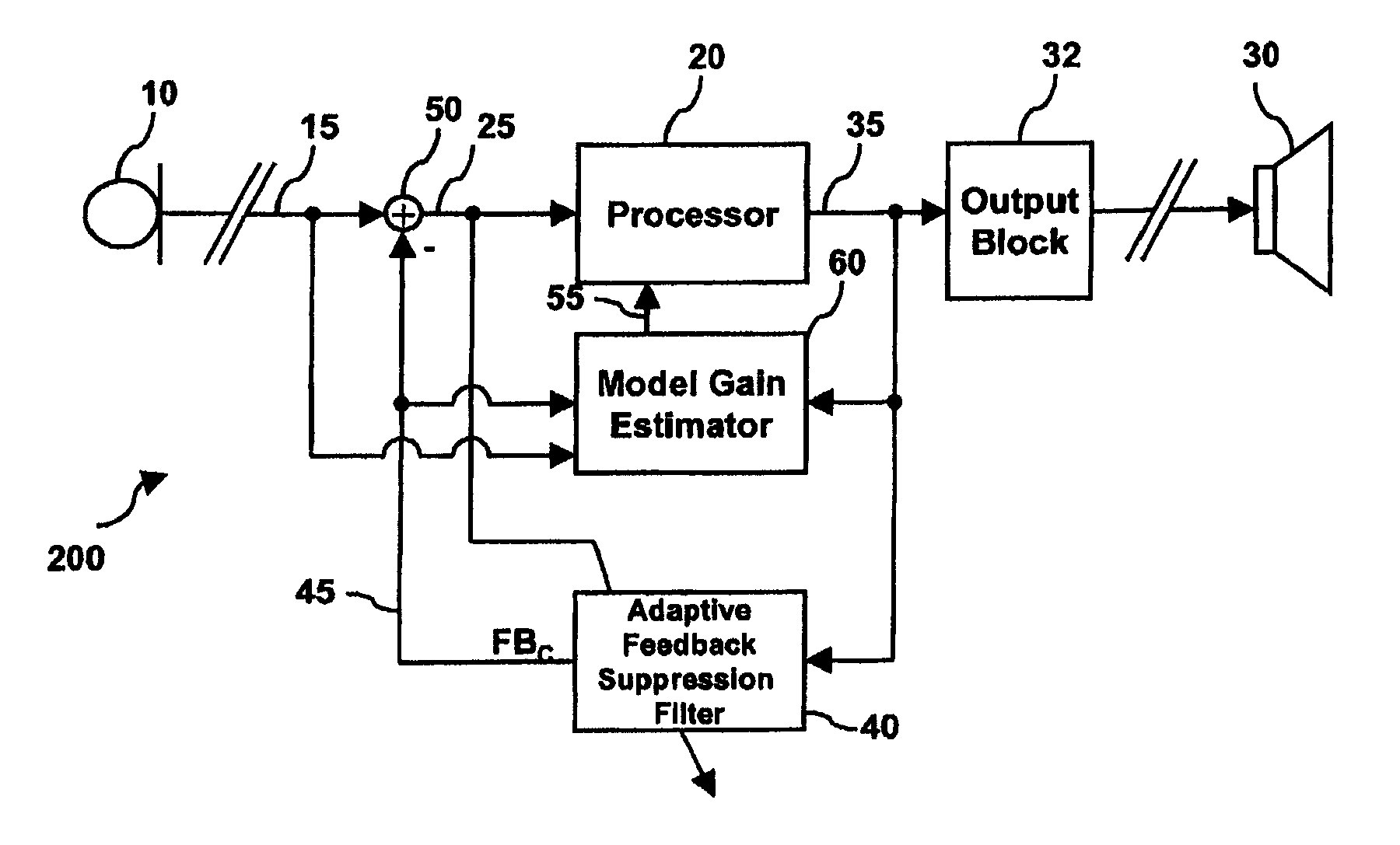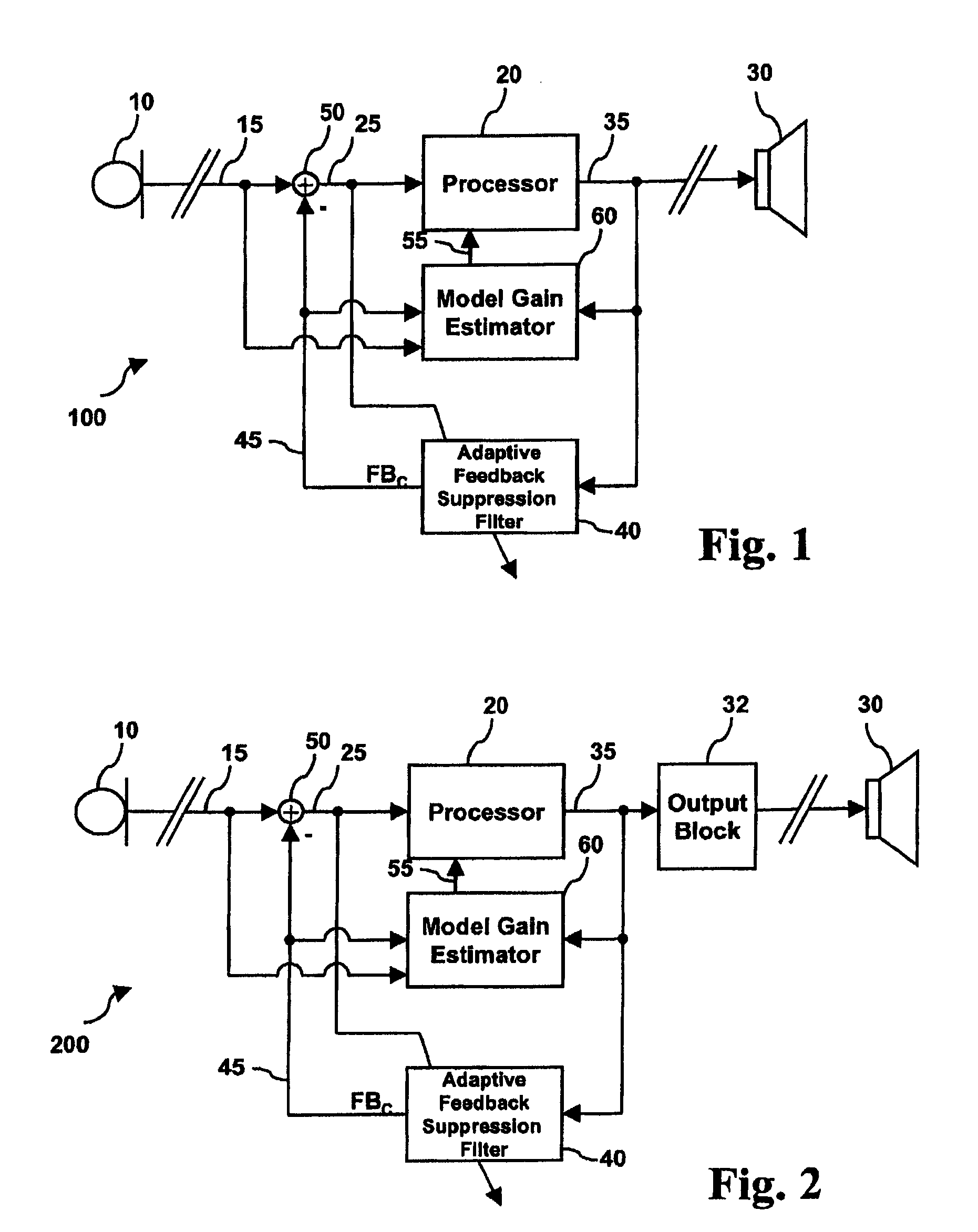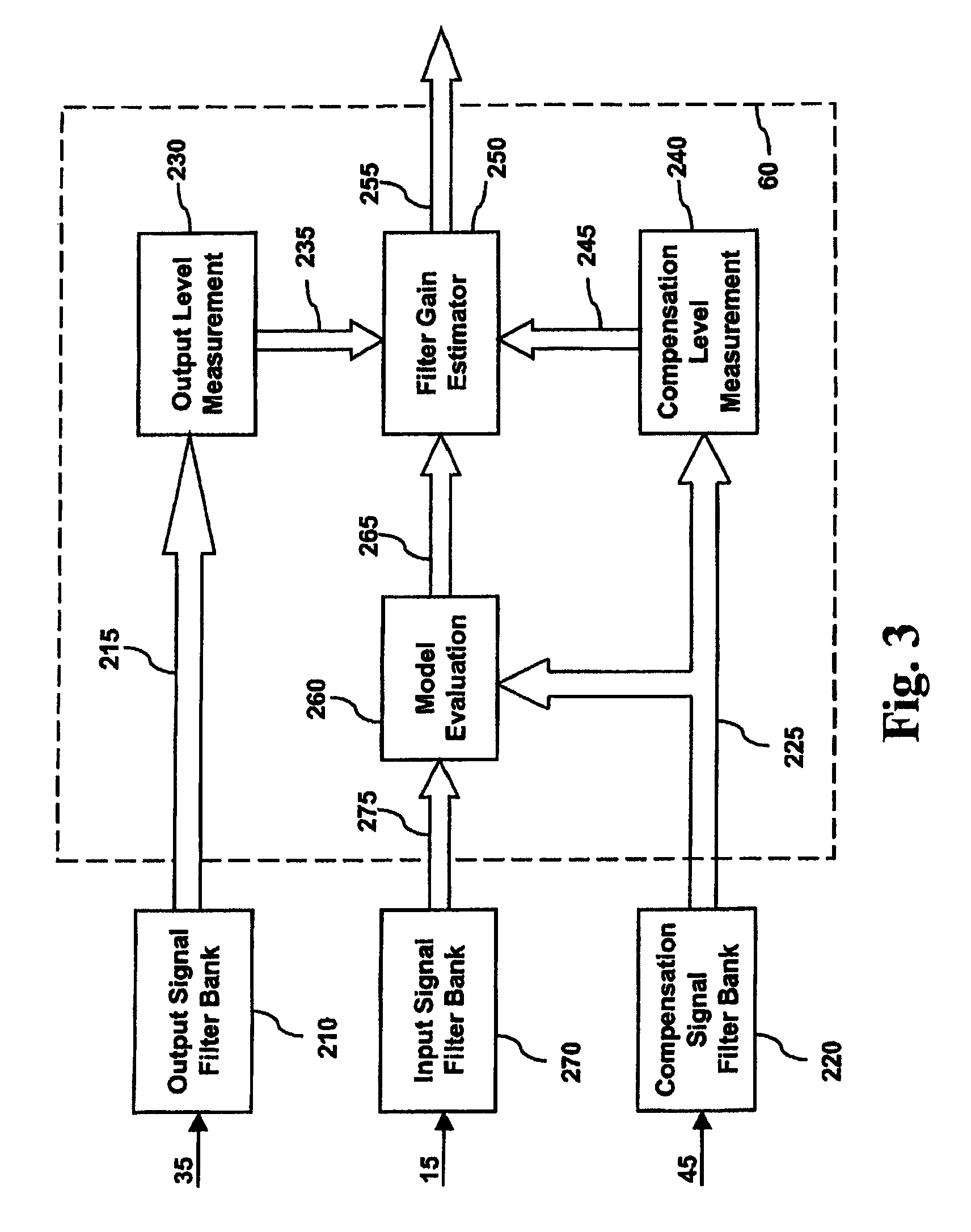Hearing aid with feedback model gain estimation
a feedback model and hearing aid technology, applied in the field of hearing aids, can solve the problems of unstable once-inaudible acoustic feedback becoming audible, and the output of hearing aids can exceed the attenuation offered by ear moulds/shells, etc., to increase the stability margin, increase the stability of hearing aids, and increase processor gains
- Summary
- Abstract
- Description
- Claims
- Application Information
AI Technical Summary
Benefits of technology
Problems solved by technology
Method used
Image
Examples
first embodiment
[0046]Reference is now made to FIG. 1, which shows a block diagram of a hearing aid according to the present invention.
[0047]The signal path of the hearing aid 100 comprises an input transducer or microphone 10 transforming an acoustic input signal into an electrical input signal 15 by, e.g., converting the sound signal to an analogue electrical signal, an A / D-converter (not shown) for sampling and digitising the analogue electrical signal into a digital electrical signal, and an input signal filter bank (not shown in FIG. 1) for splitting the input signal into a plurality of frequency bands. The signal path further comprises a processor 20 for generating an amplified electrical output signal 35 and an output transducer (loud speaker, receiver) 30 for transforming the electrical output signal into an acoustic output signal. The amplification characteristic of the processor 20 may be non-linear, e.g. it may show compression characteristics as it is well-known in the art, providing mo...
PUM
 Login to View More
Login to View More Abstract
Description
Claims
Application Information
 Login to View More
Login to View More - R&D
- Intellectual Property
- Life Sciences
- Materials
- Tech Scout
- Unparalleled Data Quality
- Higher Quality Content
- 60% Fewer Hallucinations
Browse by: Latest US Patents, China's latest patents, Technical Efficacy Thesaurus, Application Domain, Technology Topic, Popular Technical Reports.
© 2025 PatSnap. All rights reserved.Legal|Privacy policy|Modern Slavery Act Transparency Statement|Sitemap|About US| Contact US: help@patsnap.com



